Last updated July 22, 2020
American households are expected to consume more than 1.4 trillion kilowatt-hours (kWh) of electricity this year. That’s almost 20 times more than the total residential electricity consumed in 1950, and it represents a more than 50 percent increase since 1990.
For perspective, the only fuel source U.S. homes use more of is natural gas, though not by much. American homes are expected to consume the equivalent of about 1.5 trillion kWh of natural gas in 2020.
The electricity used in homes powers everything from air conditioners to refrigerators to TVs and gaming systems. Any appliance, light or other object plugged into an outlet or socket draws electrical power, and the average home uses nearly 11,000 kWh per year.
But consumption, prices and bills vary considerably across the country, and it may be possible for consumers to reduce the amount of electricity they consume, saving money and potentially lowering their environmental impact.
We analyzed data from the Energy Information Administration on electricity consumption across the country over the past few decades.
Key Findings
- Homes in the South dominate the top 10 of electricity consumption due to use of air conditioning, with Tennessee and Louisiana topping the list.
- Despite having the lowest electricity consumption per home, Hawaii residents have the highest total electricity bill due to having the highest kWh cost.
- Charging an iPhone is inexpensive but illustrates the difference in kWh costs per state. In Hawaii, it will cost you $1.24 to charge your iPhone all year. In Louisiana, just $0.37.
- The impact of residential electricity deregulation is mixed, as the states with the lowest prices for residential electricity are all states where utilities are public. But half of the 16 states with residential electric utility deregulation have lower-than-average bills.
- Cable boxes, coffee makers and TVs are among the biggest users of electricity in homes.
Table of Contents
Electricity Consumption, State Rankings
The average U.S. home consumes about 900 kWh of electricity per month, but the biggest electricity-consuming states are all in the South. This should come as no surprise since air conditioning is one of the two biggest sources of electricity consumption in homes, expected to account for about 14 percent of residential electricity consumption.
Southern states had the largest number of cooling degree days (CDD), a measure of high temperatures relative to a standard temperature, such as 65 degrees. So a day where the average temperature is 80 degrees has a CDD level of 15, or the difference between 80 degrees and 65 degrees. Southern states had an average CDD of 2,401 in 2018, the most recent year for which data is available, compared to the Northeast, which had an average CDD of 776 that year.
The impact of air conditioning on monthly electricity consumption is clear — the top 13 electricity-consuming states are in the South.
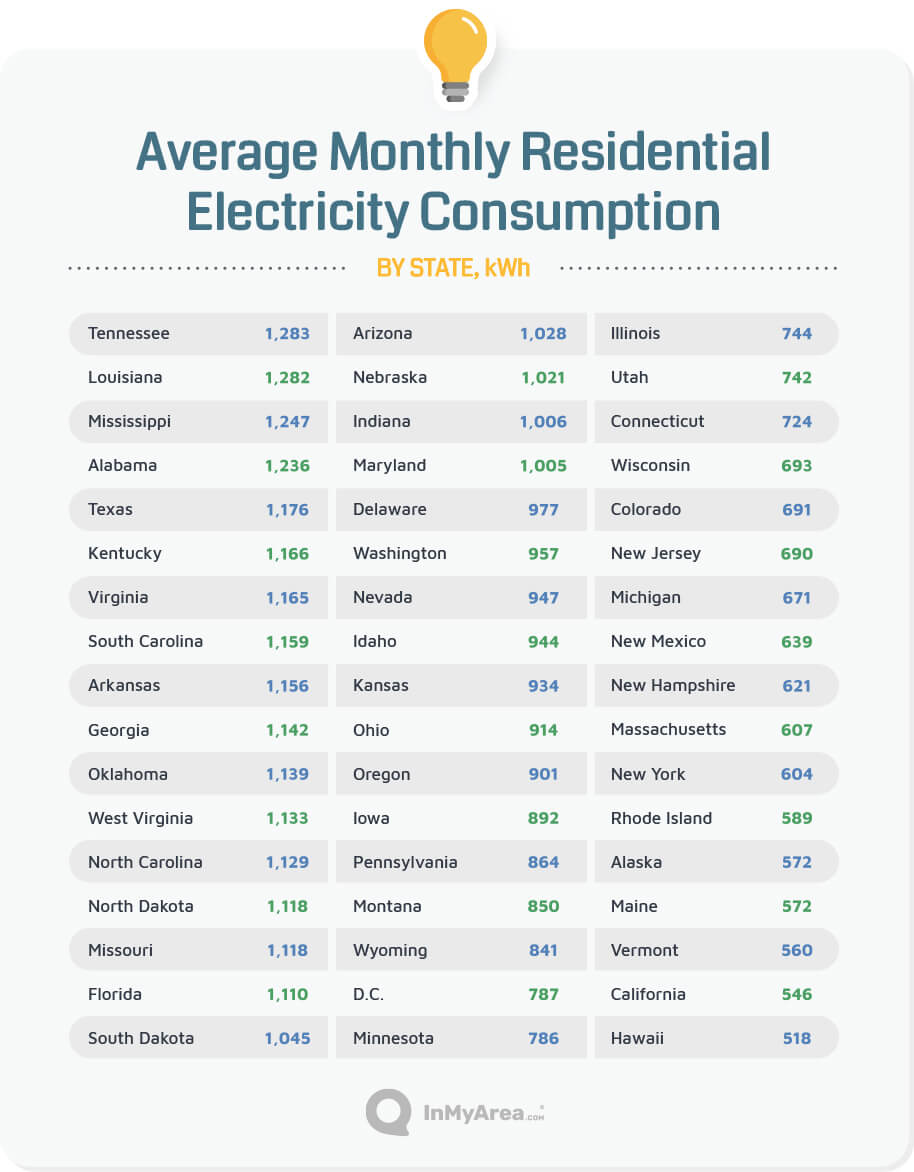
Average Electricity Bills, State Rankings
Logic would dictate that higher rates of consumption lead to higher bills, and that’s true for some states, as several Southern states are among those with the highest bills. But the state with the lowest rate of electricity consumption per month also has the highest average electricity bill in the country. That state is Hawaii, and the reasons for such low consumption rates and high bills are many, but it’s largely an effect of the high level of effort involved in generating electricity on islands.
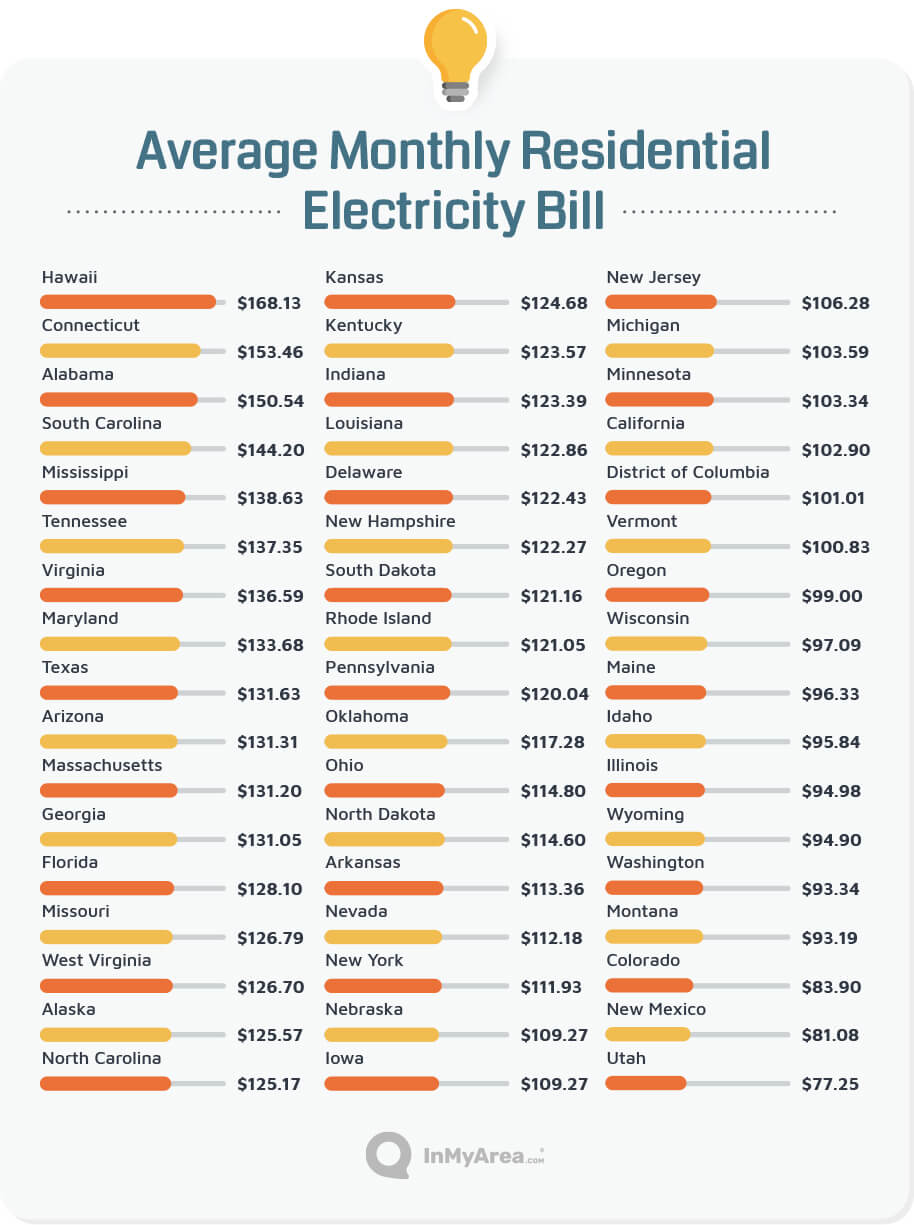
Prices per kWh and How Much to Charge an iPhone, State Rankings
In 15 states and the District of Columbia, residential electric consumers have the option of purchasing their electricity from private suppliers rather than public utilities. These states have what are known as deregulated utility markets. The impact of utility deregulation on consumer prices is mixed, as our analysis found that deregulated residential utility states tend to have higher prices but lower bills.
The 10 states with the lowest electricity rates all are public electric utility states, while seven of the 10 states with the highest prices are residential deregulation states.
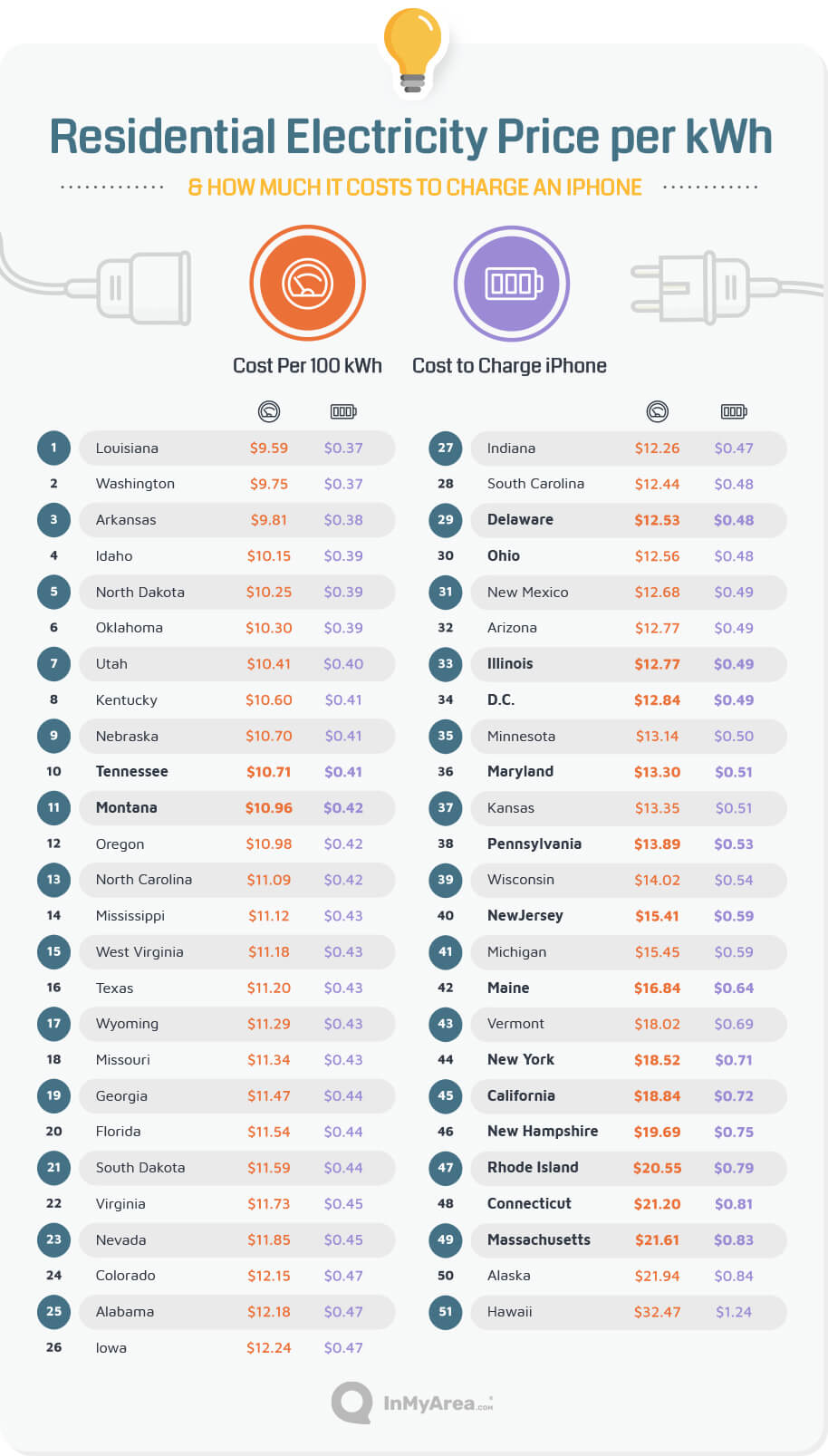
But while prices didn’t appear to show a benefit for residential consumers in deregulated states, looking at average monthly cost does appear to show a correlation between electric service choice for residential consumers and lower bills. Of the 16 states with residential electric service provider choice, half have monthly electric bills that are lower than the national average, and of the 11 states with average monthly bills under $100, three are residential electricity choice states.
That’s far from a definitive sign that residential electricity choice benefits consumers, but the change in electric bills over time also provides some correlation between deregulation and price.
The two states with the highest increase in the average monthly residential electric bill over the past 20 years both have deregulated residential electricity markets, but every state has seen the average monthly bill climb. Notably, though, half of the states where bills rose by the slowest rates have deregulated residential electricity markets.
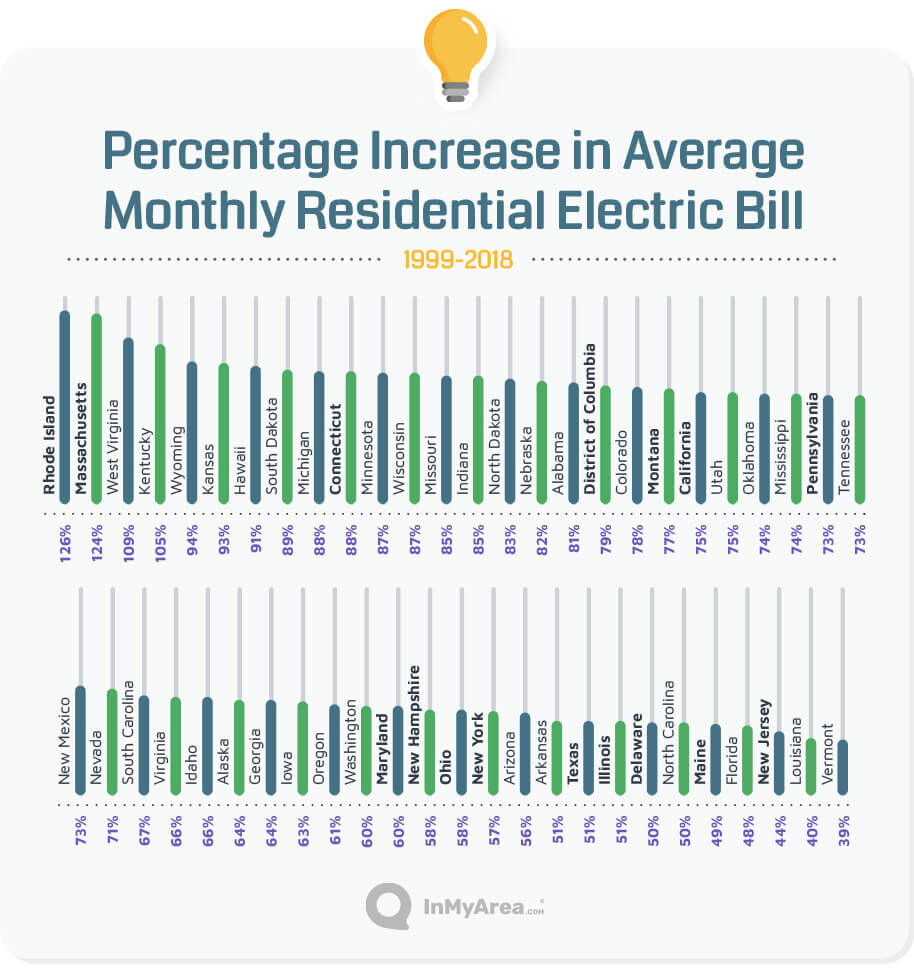
How We Use Electricity
The way we use electricity in our homes has changed, though we’re still generally using many of the same appliances we did 30 years ago. But the share of electricity used by individual appliances and other items has changed, in some cases, by quite a bit.
For example, lighting accounted for nearly 10 percent of residential electricity in 1990; today that number is just 5 percent, thanks largely to the prevalence of Energy Star-approved light bulbs, which draw far less electricity. Refrigeration also has become considerably more efficient over time.
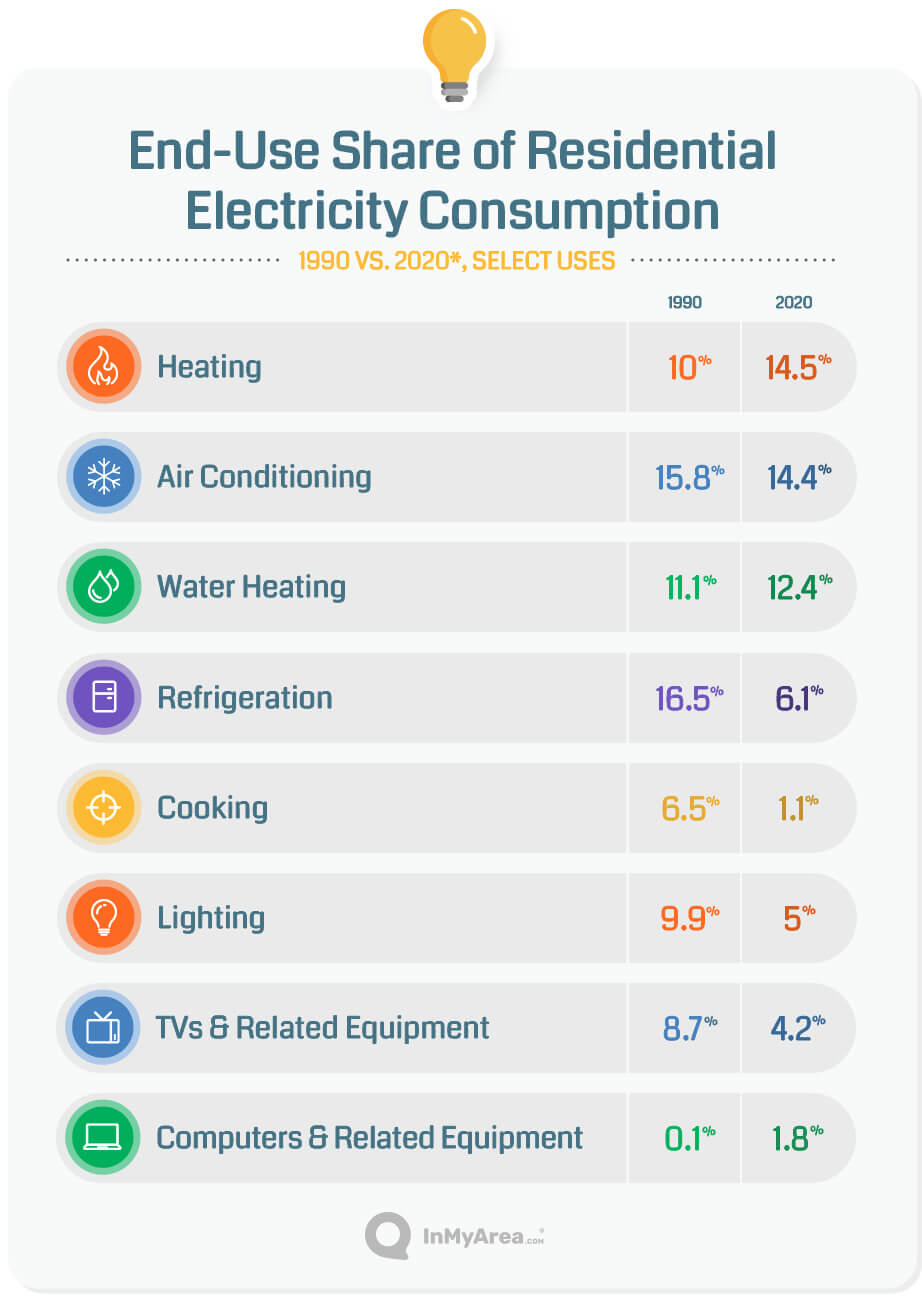
Depending on how your electricity is generated, charging your phone or gassing up your electric car could be contributing to climate change. So lowering your electricity usage isn’t just a matter of saving money.
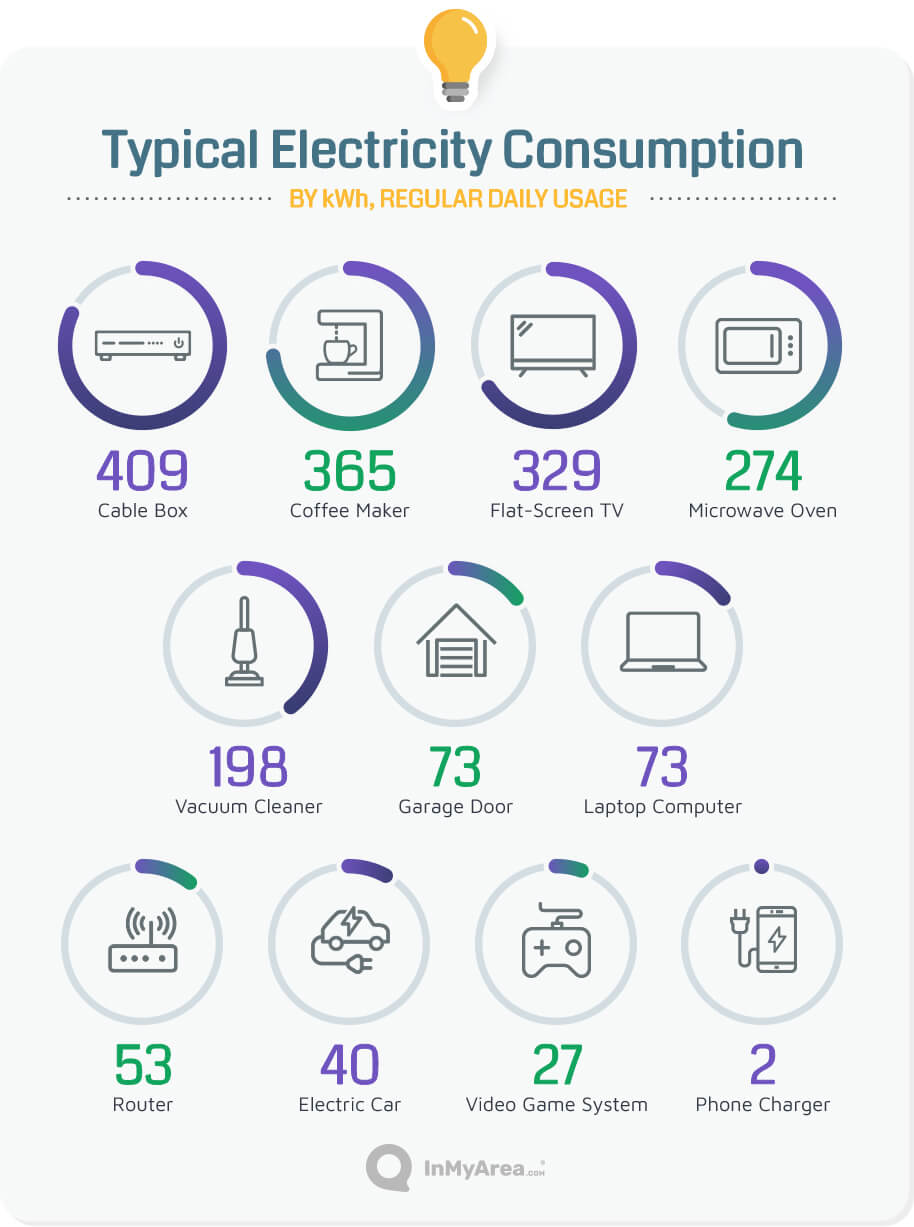
How can you reduce your use of electricity? Here are several relatively easy strategies for cutting your overall electric consumption:
- Ensure light bulbs are efficient LED or compact fluorescent lamp types. Replace incandescent bulbs inside and outside your home.
- When older appliances begin to break down, replace them with Energy Star-rated versions.
- Purchase advanced power strips for home offices or TV/gaming system setups. These products work by cutting power to electronics and other devices when a specific device is shut off. For example, if you’re working from home, use an advanced power strip that will automatically cut power to your printer, monitor and any other office devices when you power down your computer. Many devices continue to draw power even while they’re shut off, and these so-called “energy vampires” can account for up to 20 percent of the monthly bill in a typical home.
- Consider renewable energy. If your budget allows it, or your state or city have special programs you can apply for, purchase and install solar panels to help offset your electricity usage. Many solar products are made to be expandable, so you can add to your system over time.
State Charts


Conclusion
For most of us, our electricity consumption is something we think about only when the bill comes every month. But depending on how your electricity is generated, binging the latest show on your smart TV could be negatively impacting the earth. And with most places in the U.S. quite literally heating up over the next several years, now is the time to get a handle on how much electricity your home uses.
